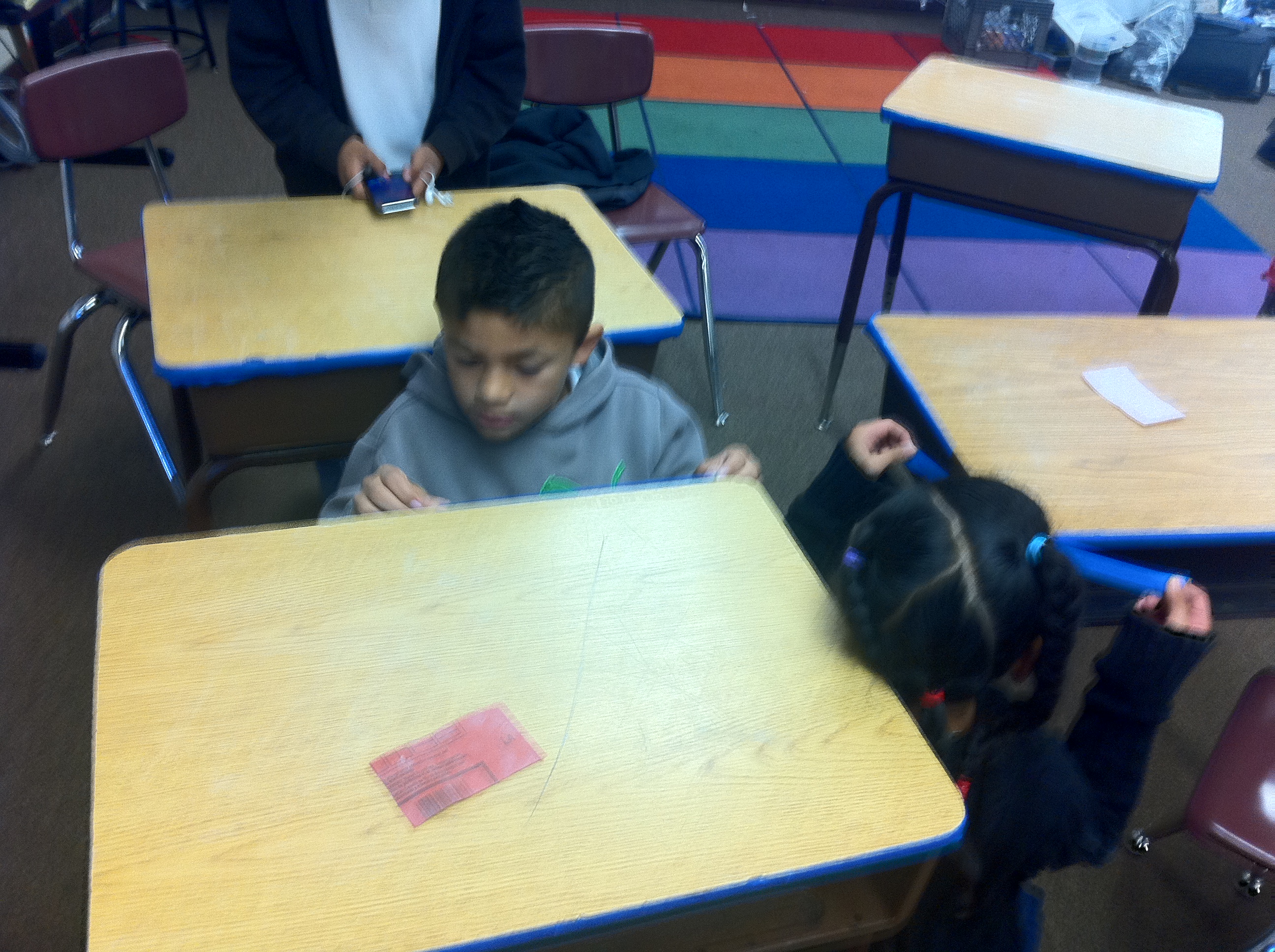However, I can also see these large whiteboards being a great tool in the library and in many classrooms. From an economical point of view I like that you can make your own collaborative-sized whiteboards by visiting your local hardware store. It also supports the drive towards the #paperless classroom. The boards can be used many times unlike butchers' paper of old.
"Ideas are more easily exposed, discussed, accepted, discarded, and modified
with the flexibility of a whiteboard."
"A large board gives enough room for the students to divide the board into sections. This is valuable if you have
multiple focus questions of if you want the students to have both a diagram and a written explanation."
cropped with SnipSnip
If we go one step further we can look at a desk sized whiteboard:
Saving Paper, One Desk At A Time!
From this to this.
IdeaPaint is a single-coat, roller-applied whiteboard paint that transforms almost anything into a high-performance dry-erase surface. Dry-Erase Board Paint for the Home | Kids Room Paint Ideas | IdeaPaint
Whiteboard desks

The (Nearly) Paperless Classroom blogger, David Wees, shares his ideas about using whiteboards to achieve his #paperless goal.
David Wees also reminds us we need to change our mindset that the paperless classroom needs a lot of technology. He is quite sure that it doesn't. What it needs, and I totally agree with him, is a transformation of pedagogy from teacher centred and content focused to student centred and a focus on developing skills.
I love this idea of creating a whiteboard notebook.
cropped with SnipSnip
For instructions on creating whiteboards try these links: http://www.instructables.com/id/Low_Cost_Lettersize_Office_Whiteboard/. http://www.instructables.com/id/DIY-Homemade-Whiteboard-on-the-cheap!/. http://www.instructables.com/id/Recycled-Mini-Dry-Erase-Board/
or we can go even larger by creating whiteboard walls_ From classroom walls in to whiteboards Sebel also supplies IdeaPaint.
There is a new term (to me) for the activity of students who are engaged in
using whiteboards collaboratively-"whiteboarding".
Do your students learn by whiteboarding?
Modeling through whiteboarding:
Tips for whiteboarding in the classroom.
and not to be left out Apple have brought out:
iPad Application Preview - padBoard - collaborative whiteboarding application
Can you see yourself organising a few of these whiteboards for your classroom or school library? Would/Do you use whiteboarding as a teaching strategy?





No comments:
Post a Comment